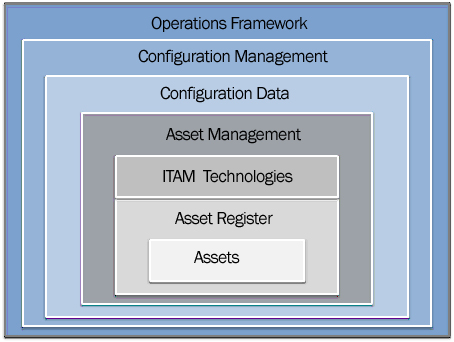ITAM: A Prerequisite for Building a CMDB (Part 4/6) – “Why Building a CMDB is Challenging"

Asset and Configuration Management Partnership
This article series has been contributed by Peter Salfi at Provance.
In this series Peter explains why an Asset Registry, created within an IT Asset Management program, comprised of the appropriate mix of people, process and technology, is often an overlooked prerequisite to creating a CMDB.
It describes a less painful approach to creating a reliable and accurate CMDB that allows organizations to realize a high return on their investment in time, effort and expense.
- PART 1 – Introduction – “Houston, We Have A Problem!”
- PART 2 – The Link between ITAM and ITSM
- PART 3 – 4 Reasons Why ITAM is a Prerequisite for a CMDB
- PART 4 – Why Building a CMDB is challenging
- PART 5 – Summary of Comparisons – ITSM vs. ITAM
- PART 6 – Conclusion – “Back to the Apollo 13 Story”
Part Four – Why Building a CMDB is Challenging
The need for a CMDB was emphasized with the introduction of ITIL. ITIL makes several fundamental assumptions:
- That organizations have access to, and processes in place to collect and manage all the required asset information;
- That they know the operational status of their assets; and
- That they have all this information organized and maintained in a comprehensive, centralized and up-to-date database.
Lack of such an Asset Registry that is presumed to exist is the primary reason why the vision of a CMDB that ITIL promotes has become more of a mirage than a reality. This is the reason why establishing a usable CMDB is time consuming, expensive and difficult to achieve. Without fully understanding each dot, from procurement to disposal, it is impossible to achieve the ITIL objective of connecting the dots.
Failing to first invest in an IT Asset Management program supported by the appropriate IT Asset Management technologies to establish a consolidated and accurate Asset Registry makes an already difficult task essentially impossible. Without these prerequisites in place, CMDBs as they are defined and intended to be used by ITIL will be few and far between.
It is important to recognize that the IT Asset Management and Configuration Management programs and their participants are different and distinct. They do not exist for the same purpose or share the same objective. IT Asset Management mainly supports the business by providing financial and contractual management of assets. It is concerned with what dots you have, where they are, what they do, how much they cost, how they are used, who owns them, when they expire, when they need to be renewed or replaced, and how they were disposed, etcetera.
Configuration Management supports IT operations by focusing on how the dots are connected and work together to form an operational service. It is therefore critical to put in place the appropriate people, processes and technologies to support the attainment of these separate yet inextricably linked mandates.
Given this link between Asset Management and Configuration Management:
- How can Configuration Management be done without first establishing an IT Asset Management program?
- How can IT services be defined without an accurate understanding of the underlying assets, including what is procured and received, what is owned, allocated, installed and utilized and how they are contractually governed?
- How can the Service Desk minimize the adverse effects of disruptions (incidents) without an effective CMDB that provides accurate and timely asset detail?
- How can IT Operations, Procurement, Finance, Receiving and Contract Management optimize the return on IT investments without the visibility and control enabled by a complete and comprehensive Asset Registry supported by an IT Asset Management program and IT Asset Management technologies?
In other words:
How can you connect the dots without knowing what dots you have, where the dots are, what the dots do, how the dots are used, and who’s responsible for the dots?
Read Part Five: ‘Summary of Comparisons – ITSM vs. ITAM‘.
This article series has been contributed by Peter Salfi. To find out more about Provance IT Asset Management for Microsoft System Center visit Provance.
Can’t find what you’re looking for?
More from ITAM News & Analysis
-
ITAMantics - April 2024
Welcome to the April 2024 edition of ITAMantics, our monthly news podcast where we discuss the biggest ITAM stories from the last month. George is joined this month by AJ Witt and Ryan Stefani. Stories tackled ... -
Broadcom is removing expired VMware licences from its portal - take action now!
Hot on the heels of Broadcom’s announcement of the end of perpetual licences for VMware it has given customers barely a week to download any keys for licenses from its portal with expired support. This is ... -
Who Loses When Broadcom Wins?
News of a new Broadcom deal rarely arrives with great fanfare. The November 2023 VMware acquisition provoked open worry online and in business circles, with many critics wondering whether the former Hewlett-Packard spinoff’s reputation would prove ...
